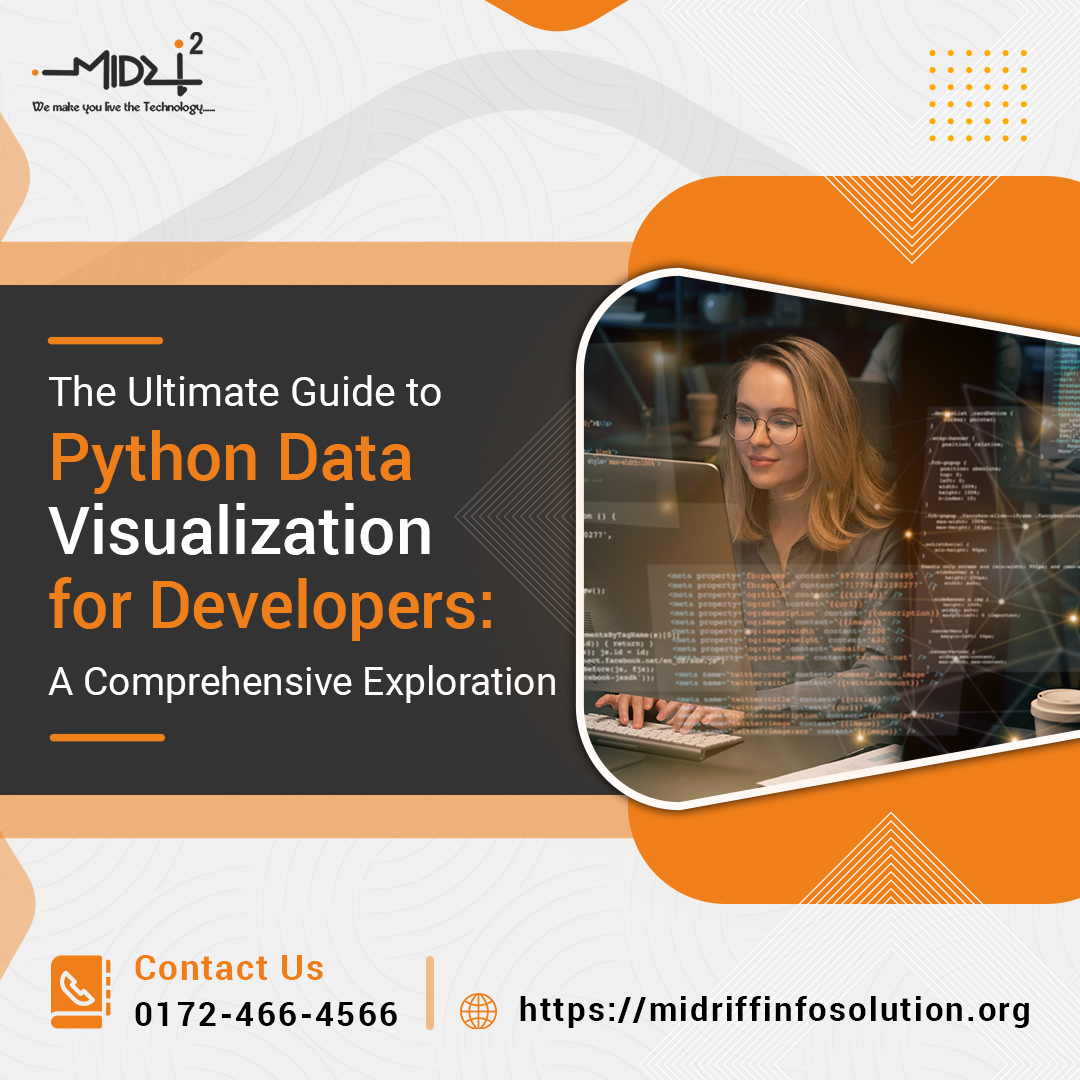In the dynamic world of programming, Python has emerged as a powerhouse, offering versatility and efficiency.
One of its standout features is the robust ecosystem of libraries available for data visualization. For developers seeking to harness the power of Python development services for effective data representation, this guide serves as a comprehensive resource.
Let’s delve into the world of Python data visualization, exploring key libraries, techniques, and best practices for developers aiming to elevate their data representation game.
Understanding the Importance of Data Visualization
Data visualization refers to presenting complex information in a graphical or visual format. It goes beyond mere aesthetics; it’s a powerful tool for conveying insights, patterns, and trends hidden within vast datasets.
For developers, mastering data visualization is crucial for creating impactful applications, making informed decisions, and communicating data-driven narratives effectively.
Matplotlib: The Core of Python Data Visualization
At the heart of Python’s data visualization capabilities lies Matplotlib. As a versatile and widely used plotting library, Matplotlib provides developers with the tools to create a variety of charts, plots, and graphs.
Whether it’s line charts, scatter plots, or histograms, Matplotlib offers a flexible and customizable platform to bring data to life.
Seaborn: Enhancing Aesthetics and Insight
While Matplotlib serves as the foundation, Seaborn steps in to enhance aesthetics and add an extra layer of functionality. Built on top of Matplotlib, Seaborn simplifies the creation of visually appealing statistical graphics.
Its high-level interface allows developers to generate informative and attractive visualizations with minimal code, making it a valuable addition to any developer’s toolkit.
Plotly: Interactive Data Visualization
For developers seeking to create interactive and web-based visualizations, Plotly is an indispensable library.
Whether it’s dynamic dashboards, interactive maps, or 3D plots, Plotly offers a rich set of tools for creating engaging and responsive visualizations.
Its integration with popular frameworks like Dash enables the development of interactive web applications driven by data.
Pandas Plotting: Simplifying Data Visualization with Data Frames
Pandas, a go-to library for data manipulation and analysis, also offers convenient plotting functionality.
Developers working with Pandas DataFrames can leverage its built-in plotting methods for quick and straightforward visualizations.
This integration streamlines the visualization process, allowing developers to focus on extracting insights from their data.
Altair: Declarative Visualization for Python
Altair takes a declarative approach to data visualization, allowing developers to specify what they want to visualize rather than how to achieve it.
With a concise and intuitive syntax, Altair simplifies the creation of complex visualizations. It’s particularly beneficial for developers who prefer a grammar-based approach to visualization design.
Best Practices for Python Data Visualization
As developers dive into the world of data visualization, adhering to best practices ensures the creation of meaningful and effective visualizations.
Consider factors such as choosing the right visualization type, labelling axes appropriately, and ensuring colour choices enhance readability.
Additionally, incorporating interactivity when applicable can elevate the user experience and engagement.
Staying Updated: The Evolving Landscape of Python Data Visualization
The field of data visualization is dynamic, with new tools and techniques continually emerging.
Developers committed to mastering Python data visualization should stay informed about updates to existing libraries and explore emerging ones.
Community forums, online tutorials, and documentation are valuable resources for staying abreast of the latest trends and advancements.
Conclusion
Python’s prowess in data visualization empowers developers to transform raw data into actionable insights. Matplotlib, Seaborn, Plotly, Pandas, and Altair, among others, form a rich ecosystem that caters to diverse visualization needs. By understanding the strengths of each library and adopting best practices, developers can create compelling visualizations that not only convey information but also captivate and engage audiences. As Python’s data visualization landscape continues to evolve, embracing these tools and techniques positions developers at the forefront of effective data representation.

